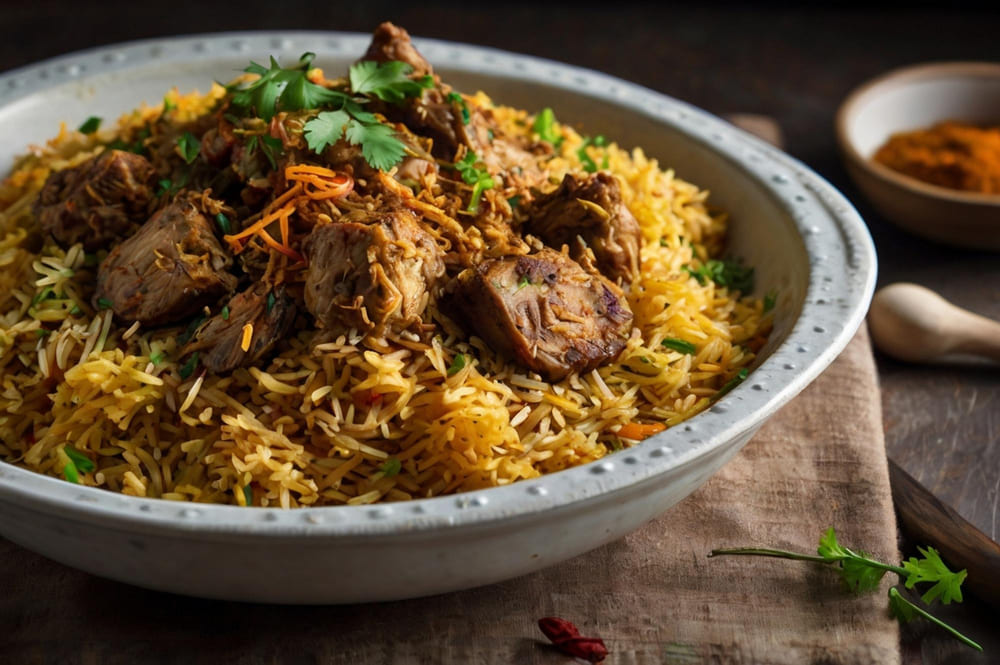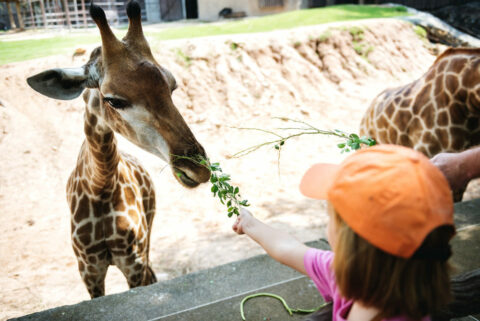Embark on a culinary journey through traditional food in Saudi Arabia as we explore the 10 iconic dishes that define the country’s rich and diverse cuisine. From the national dish Kabsa to the delectable Ma’amoul, discover the history, ingredients, and preparation methods that make these traditional Saudi Arabian dishes a must-try for food enthusiasts and travelers alike. Whether you’re a foodie looking for new flavors or a traveler seeking authentic culinary experiences, this article is your guide to the vibrant and flavorful world of Saudi Arabian cuisine.
Introduction to Saudi Arabian Cuisine
Saudi Arabian cuisine is a reflection of the country’s rich cultural heritage, with a diverse range of flavors, ingredients, and cooking techniques. Traditional food in Saudi Arabia holds a significant place in the country’s culture and is deeply rooted in its history. The cuisine is a blend of Bedouin, Levantine, and Hejazi culinary traditions, resulting in a unique and flavorful gastronomic experience.
The importance of traditional food in Saudi culture goes beyond just sustenance. It is a means of preserving cultural identity, fostering community bonds, and celebrating festive occasions. The preparation and sharing of food are integral to social gatherings, family events, and religious festivities, making traditional Saudi Arabian dishes an essential part of everyday life.
Kabsa
Kabsa, often regarded as the national dish of Saudi Arabia, is a flavorful rice dish that is infused with aromatic spices and often accompanied by tender meat, such as chicken, lamb, or goat. The history of Kabsa dates back centuries and is deeply intertwined with Bedouin culinary traditions.
The key ingredients and spices used in Kabsa include basmati rice, tomatoes, carrots, onions, garlic, and a blend of spices such as cardamom, cinnamon, cloves, and nutmeg. The preparation method involves layering the rice and meat in a pot, allowing them to cook together and infuse the flavors.
Once prepared, Kabsa is traditionally served on a large platter, with the meat placed on top of the fragrant rice. It is often garnished with toasted almonds, raisins, and fresh cilantro, adding a delightful contrast of textures and flavors.
Jareesh
Jareesh is a traditional Saudi Arabian dish that is made from crushed wheat, which is cooked to a porridge-like consistency and then flavored with a variety of spices and meat. This dish has been a staple in Saudi cuisine for centuries and is known for its hearty and comforting qualities.
The key ingredients for Jareesh include crushed wheat, meat (commonly lamb or chicken), onions, garlic, and a blend of spices such as cumin, coriander, and black pepper. The cooking process involves simmering the crushed wheat and meat together until they form a thick and creamy texture.
Jareesh exhibits regional variations in Saudi Arabia, with different regions adding their own unique twist to the dish. It is often enjoyed with a side of tangy yogurt or pickled vegetables, enhancing the overall dining experience.
Ma’amoul
Ma’amoul is a beloved dessert in Saudi Arabian cuisine, known for its delicate pastry and sweet fillings. This traditional treat has a rich historical background and is often associated with festive occasions and family gatherings.
The ingredients for Ma’amoul typically include semolina, flour, butter, and a variety of fillings such as dates, pistachios, or walnuts. The pastry is shaped using special wooden molds and then baked to perfection, resulting in a delightful combination of textures and flavors.
Ma’amoul is often enjoyed with a cup of Arabic coffee or tea, making it a popular choice for afternoon gatherings and social events. The intricate designs on the pastry also add to its visual appeal, making it a treat for both the eyes and the palate.
Harees
Harees holds a special place in Saudi Arabian cuisine, especially during the holy month of Ramadan. This dish has ancient roots and is a symbol of generosity and communal dining during this sacred time of fasting and reflection.
The ingredients for Harees include wheat, meat (commonly chicken or lamb), onions, and a blend of spices such as cinnamon and cardamom. The cooking process involves slow-cooking the wheat and meat until they form a smooth and creamy texture, resulting in a comforting and nourishing dish.
During Ramadan, Harees is often prepared in large quantities and shared with neighbors and community members as a gesture of goodwill. It is a dish that embodies the spirit of togetherness and generosity, making it an essential part of the Ramadan dining experience.
Mutabbaq
Mutabbaq is a popular savory pastry in Saudi Arabian cuisine, known for its flaky layers and flavorful fillings. This dish has regional variations across the country, with each region adding its own unique twist to the traditional recipe.
The filling options for Mutabbaq can vary and may include a combination of minced meat, onions, eggs, and a blend of spices such as turmeric and cumin. The pastry is folded and then pan-fried or baked until it achieves a golden and crispy exterior, creating a delightful contrast of textures.
Mutabbaq is often served with a side of tangy pickles or a refreshing salad, complementing the richness of the pastry. It is a popular street food in Saudi Arabia and is enjoyed by locals and visitors alike.
Saleeg
Saleeg is a comforting rice dish that holds a significant place in Saudi Arabian cuisine, often enjoyed as a main dish or a side dish. This dish has a rich cultural and historical background, with roots that can be traced back to ancient Bedouin traditions.
The ingredients for Saleeg typically include rice, chicken, onions, and a blend of aromatic spices such as cinnamon and cardamom. The preparation process involves simmering the rice and chicken together until they form a creamy and porridge-like texture, resulting in a dish that is both hearty and comforting.
Popular toppings and garnishes for Saleeg may include toasted almonds, fried onions, and a drizzle of aromatic ghee, adding layers of flavor and texture to the dish. It is often enjoyed with a side of tangy yogurt or a fresh salad, creating a well-balanced and satisfying meal.
Haneeth
Haneeth is a traditional slow-cooked lamb dish that is often featured in festive feasts and celebratory occasions in Saudi Arabia. The marination and slow-cooking techniques used in preparing Haneeth result in tender and flavorful meat that is enjoyed by food enthusiasts across the country.
The marination process for Haneeth involves a blend of spices such as cumin, coriander, and black pepper, which infuse the meat with a rich and aromatic flavor. The slow-cooking process ensures that the meat becomes tender and succulent, creating a dish that is both comforting and indulgent.
Haneeth is often served with traditional accompaniments such as fragrant rice, flatbread, and a variety of pickles and chutneys. It is a dish that symbolizes hospitality and abundance, making it a centerpiece of festive gatherings and special occasions.
Shawarma
Shawarma has become a ubiquitous part of Saudi Arabian cuisine, with its origins tracing back to Levantine culinary traditions. This flavorful street food has gained immense popularity across the country and is enjoyed by locals and visitors alike.
The marination process for Shawarma involves a blend of spices, garlic, and yogurt, which infuse the meat with a rich and tangy flavor. The meat is then roasted on a vertical spit, resulting in tender and succulent slices that are packed with flavor.
Shawarma is often served in a wrap or a pita bread, accompanied by a variety of condiments such as tahini sauce, pickled vegetables, and a sprinkle of fresh herbs. It is a convenient and flavorful option for on-the-go dining, making it a popular choice for street food enthusiasts.
Kleeja
Kleeja is a traditional Saudi Arabian pastry that is enjoyed as a sweet treat, often paired with a cup of Arabic coffee or tea. This beloved dessert has a rich historical background and is known for its delicate texture and sweet flavors.
The ingredients for Kleeja typically include flour, butter, sugar, and a variety of aromatic spices such as cardamom and cloves. The pastry is traditionally shaped into intricate patterns and then baked until it achieves a golden and crispy exterior, resulting in a delightful combination of textures and flavors.
Kleeja is often enjoyed during festive occasions and social gatherings, where it is served alongside a steaming cup of Arabic coffee or tea. It is a treat that is cherished for its nostalgic appeal and delightful taste, making it a must-try for those exploring traditional Saudi Arabian cuisine.
Conclusion
Embarking on a culinary journey through Saudi Arabia unveils a vibrant and flavorful world of traditional food that is deeply rooted in the country’s rich cultural heritage. From the iconic Kabsa to the delectable Ma’amoul, each dish offers a unique blend of flavors, ingredients, and historical significance, making them a must-try for food enthusiasts and travelers alike.
As we explore the 10 iconic dishes that define Saudi Arabian cuisine, we are reminded of the importance of preserving and celebrating traditional food in Saudi culture. These dishes not only offer a glimpse into the country’s culinary traditions but also serve as a means of fostering community bonds and celebrating festive occasions.
We encourage readers to explore and experience traditional Saudi Arabian food, whether through home-cooked meals, local eateries, or culinary tours. The rich and diverse culinary heritage of Saudi Arabia offers a treasure trove of flavors and experiences, waiting to be discovered and savored.
DON’T MISS OUT ON UNFORGETTABLE EVENTS IN SAUDI ARABIA!
After exploring the captivating attractions of Riyadh, why not elevate your experience by attending some of the most exciting events and shows Saudi Arabia has to offer? Booking your tickets online through WeBook.com ensures you not only get the best seats at competitive prices but also enjoy the convenience of a user-friendly platform. Whether it’s a breathtaking concert, a thrilling sports event, or a cultural festival, WeBook.com covers it all, providing you with exclusive access and special offers. Secure your spot now and make your visit to Saudi Arabia truly unforgettable. Click here to book your tickets: WeBook.com and start planning your next adventure today!














